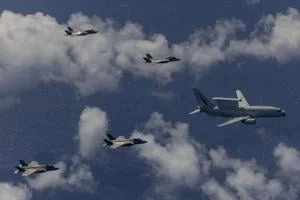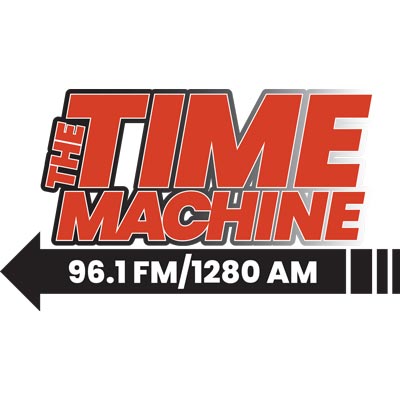A group of 16 retired U.S. Air Force generals is asking congressional leaders to increase the purchase of F-35 Lightning fighter aircraft and a replacement for the Air Force’s aging airborne warning and control system fleet.
The Air & Space Forces Association sent a letter on Monday to Congressional leaders, asking them to restore funding for a full purchase of 75 F-35s and to undo the termination of the Boeing E-7 Wedgetail AWACS program.
As part of the U.S. Department of Defense’s $961 billion funding request, the number of Air Force F-35 purchases was cut from 75 to 24, while the E-7 program was canceled.
Gen. Ronald R. Fogleman, the 15th chairman of the Air Force, said on a Zoom call with media that cutting the F-35 purchases could jeopardize the service’s operations if several of the four theaters of operation — the continental U.S., Europe, Asia and the Middle East — flare up simultaneously.
“And so 72 might not be the right number, but it’s, in my opinion, a minimum number to build back up the fighter force structure to deal with the threats that we face,” Fogleman said.
Air Force leaders have repeatedly said a minimum of 72 fighter aircraft need to be purchased annually to replace the service’s aging fleet. This year’s budget request would only purchase 45, with 21 of those F-15EX Eagle II aircraft.
The Air Force has already spent $2.5 billion on the Wedgetail program, which the retired generals said is a vital system. AWACS aircraft are flying air contact tracking and battle management platforms and have been essential in every U.S. conflict since the Vietnam War. The Wedgetails were intended to replace the service’s aging E-3 Sentry AWACS aircraft, which entered service in March 1977.
Defense Secretary Pete Hegseth told Congress in June that the E-7 is an example of a platform that isn’t survivable on a modern battlefield and that the service would pivot to space-based surveillance systems instead, along with a purchase of the Navy’s Northrop Grumman E-2D Hawkeye AWACS.
The 18th U.S. Air Force chief of staff, retired Gen. Michael Moseley, said space is no longer a free game, it’s a contested combat arena and putting all of eggs into orbit is a bad operational idea.
“But it was basically a notion of what can we move on to orbit, and what can we divest ourselves of?” Moseley said. “Divest ourselves of air breathing? Can we move (now retired E-8) J-STARS? Can we move AWACS? Can we move our sensors into orbit? We spent quite a bit of time on that, and I think we, with 100% agreement, came back and said, that would be a great idea, except for two realities: We don’t have the technology to migrate the air breathing sensors into orbit, and two, the vulnerabilities will eventually become severe.”
Gen. Michael Loh, the first commander of the Air Combat Command and a former Air Force vice chairman, said the vulnerability of the E-7 in contested air space isn’t an issue because Air Force has traditionally “sanitized” areas from both aerial and ground-based threats such as surface to air missiles.
“And that’s just a false assumption, but the Air Force seems to have taken up the fact that if an aircraft can’t operate in contested airspace, it can’t contribute to the battle,” Loh said. We can sanitize areas of operation. We’ve done it in every war. We’ll do it in every war. We can operate in contested airspace. We can clear it out when we have an air operation like we we’ve done very well in Desert Storm.
“We did it in Midnight Hammer. We did it every campaign we’ve been involved in, we can, we can operate in that airspace, with defense suppression, with overwhelming force and with smart tactics, and we’ve done it all the time. So we shouldn’t be afraid of contested airspace.”
The E-2 is designed to operate from the U.S. Navy’s aircraft carriers and has fewer on-board operators, decreased range and a smaller radar than the E-7.
Since the Hawkeye is designed to take off and land on carriers, this design would allow the aircraft to use shorter landing fields closer to the battlespace.
The E-2 also doesn’t use the Air Force’s in-flight refueling method which uses a “boom” flown by an operator into a receptacle on the receiving aircraft.
The Hawkeye can only be refueled via probe and drogue method as are other Navy and Marine Corps aircraft. This refueling method uses a probe on the receiving aircraft, which is flown by the pilot into a basket (known as a drogue) from the trailing aircraft.
The advantage of the boom method is a much greater fuel transfer rate, while the older probe and drogue method allows even fighter aircraft to be fitted with refueling gear (such as the Navy’s F-18 Super Hornet) to act as tankers.
The E-7 is operated by the Royal Australian Air Force, the South Korean Air Force and the Turkish Air Force and will be entering service with the Royal Air Force next year.
The E-7 also has the advantage of more operator stations, with Australian aircraft having 10 and space for four more, while the smaller fuselage of the E-2 only has three.






